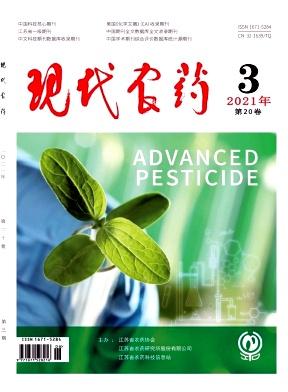Fungicide Scent Pollution Disrupts Floral Search-and-Selection in the Bumblebee Bombus impatiens
引用次数: 0
Abstract
Bumblebees are valuable generalist pollinators. However, micro- and macro-stressors on bumblebees negatively impact both foraging efficiency and pollination efficacy. Given that colonies have a resource threshold for successful reproduction, factors that decrease foraging efficiency could negatively impact conservation efforts. Recently, agrochemical odor pollution has been shown to hinder floral odor learning and recognition in Bombus impatiens via an associative odor learning assay (FMPER). These results may have implications for the field foraging behavior of bumblebees. Building on this prior work, our study aimed to determine if negative effects of fungicides on associative odor learning and recognition scale up to negative impacts on actively foraging bumblebees. These experiments investigated whether the presence of a background fungicide odor (Reliant® Systemic Fungicide) impacts the location of a learned floral resource (lily of the valley-scented blue flowers) in a wind tunnel. Experiments were run with and without early access to visual cues to determine if fungicide odor pollution is more impactful on bees that are engaged in olfactory versus visual navigation. Fungicide odor pollution reduced landing frequency in both paradigms.杀真菌剂气味污染破坏了大黄蜂对花的搜寻和选择
大黄蜂是很有价值的通才传粉者。然而,对大黄蜂的微观和宏观压力均对其觅食效率和授粉效率产生负向影响。考虑到群体有一个成功繁殖的资源门槛,降低觅食效率的因素可能会对保护工作产生负面影响。最近,通过联想气味学习实验(FMPER),农用化学品气味污染已被证明会阻碍凤仙花的气味学习和识别。这些结果可能对大黄蜂的野外觅食行为有启示。在此之前的工作的基础上,我们的研究旨在确定杀菌剂对联想气味学习和识别的负面影响是否会扩大到对积极觅食的大黄蜂的负面影响。这些实验研究了背景杀菌剂气味(Reliant®系统杀菌剂)的存在是否会影响风洞中学习到的花卉资源(山谷百合的蓝色花朵)的位置。实验在有和没有早期视觉线索的情况下进行,以确定杀菌剂气味污染对从事嗅觉导航和视觉导航的蜜蜂的影响更大。杀菌剂气味污染降低了两种模式下的着陆频率。
本文章由计算机程序翻译,如有差异,请以英文原文为准。
求助全文
约1分钟内获得全文
求助全文

 求助内容:
求助内容: 应助结果提醒方式:
应助结果提醒方式:


